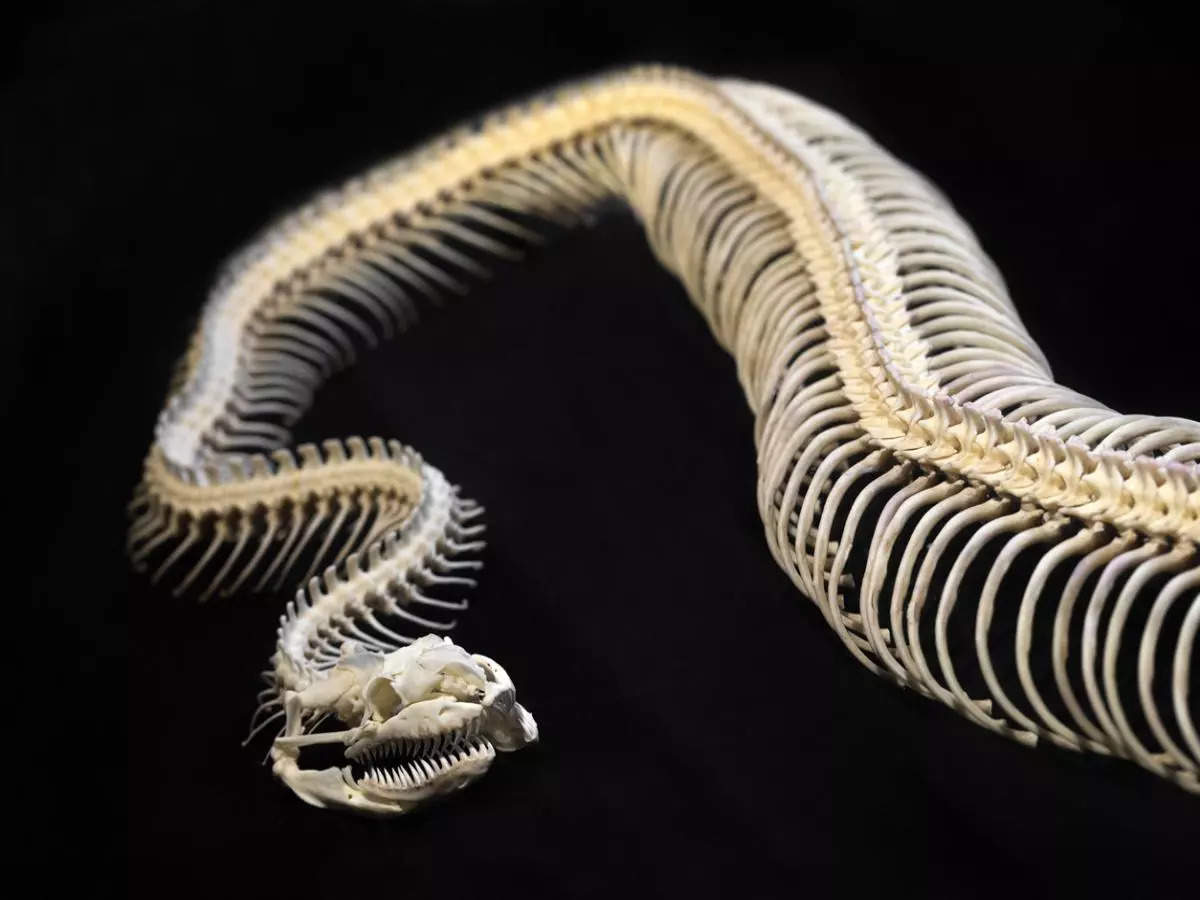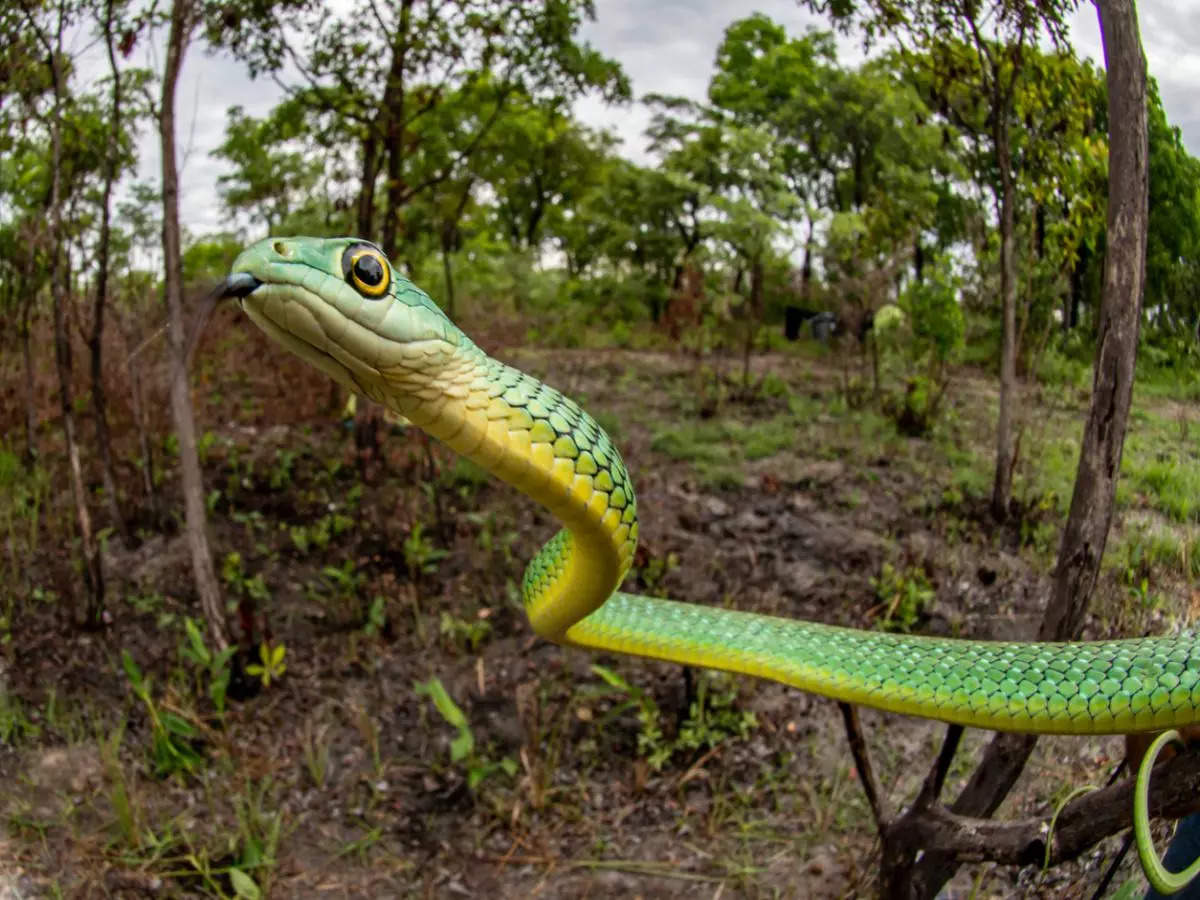
In a huge discovery, paleontologists have discovered a massive fossil of the world’s ‘largest snake’ that ever existed’ in Gujarat! The remains unearthed of the creature are from ancient times. This massive predator snake is estimated to rival the size of the longest snake ever slithered on the earth! The enormous serpent, named Vasuki Indicus in science, also finds mention in Hindu mythology, named Vasuki.
Read more: Himachal Pradesh High Court sets age limit for adventure sports like rafting and kayaking amid safety concerns
The fossilised remains are between 10 to 15 meters in length and were found in Gujarat’s Panandhro Lignite Mine in Kutch. The scientists are amazed as the age of these fossils is 47 million years! It also tells a lot about a distant era of Earth’s history.
The groundbreaking discovery was made by researchers at the Indian Institute of Technology Roorkee (IIT Roorkee). The report was published in the journal Scientific Reports.Debajit Datta, a postdoctoral fellow at the Indian Institute of Technology Roorkee (IITR) and co-author of a study, emphasised the symbolic significance of naming the species. He noted that a serpent described similarly in ancient Hindu scriptures has been revered under the name Vasuki for countless ages.
Most tourist-friendly places of India
FacebookTwitterPintrest
Professor Sunil Bajpai and Debajit Datta from IIT Roorkee made the significant discovery and described that they stumbled upon 27 pieces of a “partial, well-preserved” vertebral column belonging to the snake.
The researchers suggest that Vasuki indicus could have been comparable in size to the famous Titanoboa. This reptile lived during a period when Earth’s geography was vastly different from today. Africa, India, and South America formed a single landmass. Vasuki indicus is thought to have had a broad and cylindrical body, suggesting a strong and robust physique.
Debajit Datta explained, “Vasuki was a majestic animal,” a postdoctoral researcher in paleontology at IIT-Roorkee and the lead author of the study. “It may well have been a gentle giant, resting its head on a high porch formed by coiling its massive body for most parts of the day or moving sluggishly through the swamp like an endless train”.
The snake’s habitat, situated in a marshy swamp near the coast, existed within a warmer global climate compared to the present day. This warmer environment likely played a role in facilitating its immense size.
This giant serpent is thought to have been among the most formidable predators from the time of the dinosaurs’ extinction 65 million years ago to the emergence of Megalodon around 23 million years ago. Yet, the study’s authors concede uncertainties regarding their size estimations for Vasuki indicus.

They also theorize about Vasuki’s behavior, proposing that its immense size might have hindered active hunting, leading it to potentially adopt ambush tactics akin to modern anacondas and large pythonids, overpowering prey.
“This discovery is significant not only for understanding the ancient ecosystems of India but also for unravelling the evolutionary history of snakes on the Indian subcontinent. It underscores the importance of preserving our natural history and highlights the role of research in unveiling the mysteries of our past,” Dr. Bajpai, said in a statement.
Read more: Kedarnath Dham: A quick guide on how to book helicopter tickets
As scientists delve deeper into the remains of Vasuki indicus, the world eagerly anticipates additional discoveries about this prehistoric behemoth. The fossil not only unveils a remarkable chapter in Earth’s evolutionary history but also serves as a poignant reminder of the planet’s perpetual transformation and the mysteries that may yet be concealed beneath its surface.
>>> Read full article>>>
Copyright for syndicated content belongs to the linked Source : Time Of India Travel – https://timesofindia.indiatimes.com/travel/travel-news/scientists-discover-enormous-fossil-of-the-worlds-largest-snake-in-kutch-gujarat/articleshow/109470535.cms















![[News] Japan Develops 10nm Nanoimprint Technology, with Potential to Tackle EUV Bottleneck – TrendForce](https://earth-news.info/wp-content/uploads/2025/12/329851-news-japan-develops-10nm-nanoimprint-technology-with-potential-to-tackle-euv-bottleneck-trendforce-360x180.jpg)
















